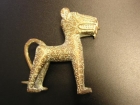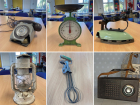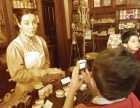Using Sources
It is important to use a wide range of sources such as pictures, artefacts, music and sights. Children will use these to build up their enquiry thought and processes and to build up their understanding of past.
Sort by:
Date (Newest first) | Title A-Z
Show:
All |
Articles |
Podcasts |
Multipage Articles
-

Creating the 'creative history' website
ArticleClick to view -

Cross Curricular Project on a famous person
ArticleClick to view -

Curriculum Planning: which non-European society might we offer at school?
ArticleClick to view -

Developing enjoyable historical investigations
ArticleClick to view -

Doing History with Objects
ArticleClick to view -

Doing history in the early years and foundation stage
ArticleClick to view -

Doing history with objects - A museum's role
ArticleClick to view -

Dora Thewlis: Mill girl activist
ArticleClick to view -

Emerging historians in the outdoors
ArticleClick to view -

Eweka's story: Benin and Big Picture History
ArticleClick to view -

Exploring the past through active enquiry
ArticleClick to view -

Extending Primary Children's thinking through artefacts
ArticleClick to view -

Film: What's the wisdom on... Evidence and sources (Primary)
ArticleClick to view -

For whose God, King and country? Seeing the First World War through South Asian eyes
ArticleClick to view -

From Champion to Hero: Engaging Pupils in a study of significant Olympians
ArticleClick to view -

From Home to the Front: World War I
ArticleClick to view -

From Kings To Queens to Sources and Evidence
ArticleClick to view -

Geosong: a transition project
ArticleClick to view -

Getting to grips with concepts in primary history
ArticleClick to view -

Hearts, Hamsters and Historic Education
ArticleClick to view

